Anna Petrus
Pioneer of Swedish Grace
Our showroom in Frihamnen, Stockholm. On the foreground a cast-iron table, designed by Anna Petrus in 1927 for the 'Swedish Contemporary Decorative Arts', Metropolitan Museum of Arts, New York, where three examples were shown.
Swedish designer and sculptor Anna Petrus played an influential role in the developments of cast iron and pewter in the first half of the 20th century. Sweden had a long tradition of producing both cast iron and pewter, but the creations remained conventional and unexciting. In the 1920s, young designers like Anna Petrus rediscovered the materials and began treating them in uncommon ways, bringing out the special qualities of the metals and creating an unrivalled renaissance of cast iron and pewter in Sweden. Petrus' success was evident by her participation in several major world exhibitions, including the 1925 Paris exhibition, "Swedish Contemporary Decorative Arts" at the Metropolitan Museum of Arts, New York in 1927, and the 1930 Stockholm exhibition. Jackson Design is pleased to have included several of the exhibits shown at these events in our collection.
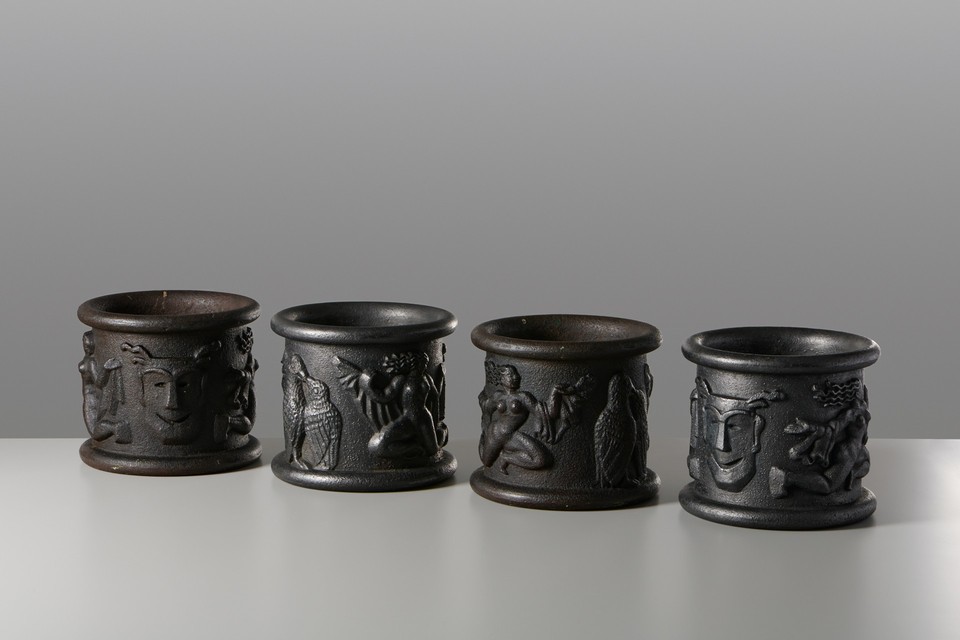
Anna Petrus, Urns no. 1, 1925, cast-iron, Produced by Näfveqvarns Bruk.
Entrance hall to the Swedish Pavilion in the International Exhibition of Applied Arts in Paris 1925.
Anna Petrus, Urns no. 1, 1925, cast-iron, Produced by Näfveqvarns Bruk.
After her participation in various national shows, Anna Petrus was invited by Carl Bergsten to contribute to the design of the Swedish Pavilion the Paris Exhibition in 1925. The Swedish pavilion, designed by Bergsten, was inspired by a Greek temple and celebrated Swedish cast iron. Upon entering the pavilion through its entrance hall, one encountered cast iron pillars and a lintel designed by Anna Petrus, produced by Näfveqvarns Bruk. After the exhibition, the pieces were repurposed and incorporated into Näfveqvarns Bruk's standard assortment. The pillars became round flower pots, while the lintel was given a new use a few years later.
Following the success at the Paris exhibition in 1925, Sweden was invited to a distinct exhibition at the Metropolitan Museum in New York in 1927. The show was a success and was extended three additional weeks beyond its initial dates before moving on to Detroit and Chicago. The highlight of the exhibition were three monumental cast iron and stone tables. The cast iron frames, made out of the lintels from the entrance hall of the Swedish Pavilion in Paris, were designed by Petrus and reminiscent of Janus' Head, a style she would later include during her collaboration with Svenskt Tenn. One of the tables was subsequently exhibited at the Stockholm exhibition in 1930, after which the tables were disassembled and the parts scattered.
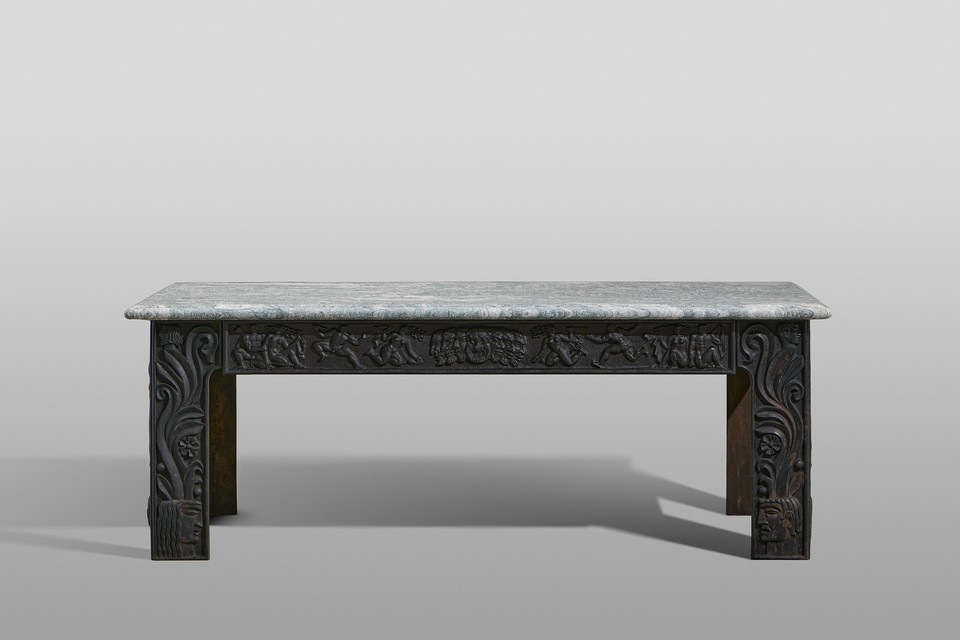
Anna Petrus, Table, 1927, Cast-iron, partly painted black, relief decoration throughout, granite top, Produced by Näfveqvarns Bruk.
Anna Petrus, Table, 1927, Cast-iron, partly painted black, relief decoration throughout, granite top, Produced by Näfveqvarns Bruk.
Anna Petrus, Table, 1927, Cast-iron, partly painted black, relief decoration throughout, granite top, Produced by Näfveqvarns Bruk.
Exhibition of 'Swedish Contemporary Decorative Arts', Metropolitan Museum of Arts, New York in 1927, three tables designed by Anna Petrus.
Anna Petrus, Table, 1925, Oak, copper tray with engravings of stylised finishing scenes, Produced by Anna Petrus.
Swedish Pavilion in the International Exhibition of Applied Arts in Paris 1925, with in the distance the Anna Petrus lion-tray table
Anna Petrus, Table, 1925, Oak, copper tray with engravings of stylised finishing scenes, Produced by Anna Petrus.
Petrus' extensive travels around the world, including to Italy and North-Africa, provided the recognisable inspiration which we see in her work. Inspired by African smoking tables, she started to experiment with her ‘tray tables'. She hand-hammered in metal trays made out of either pewter, copper or bronze, occassionaly inlaid with silver. The table stands were carved in wood again by her own hand. Several examples were shown at the Swedish Pavilion in the International Exhibition of Applied Arts in Paris 1925, as illustrated above. The ‘Lion Tray Table’, previously in our collection, was produced in two versions; One with its legs in oak, another with dark wooden legs.
Upon her return to Sweden, Petrus began her collaboration with Estrid Ericson, the founder of Svenskt Tenn. During this time she designed various pewter objects, often featuring the lion figure. The ceiling lamps were designed in the late 1920s; the earlier versions had been designed for candles and were referred to as chandeliers. The candelabras were later removed.
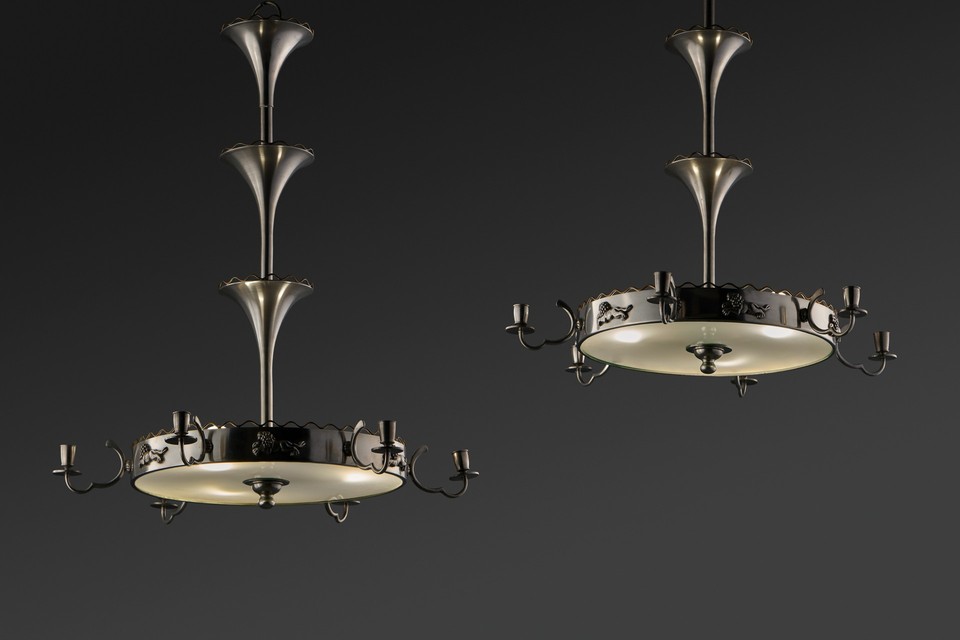
Anna Petrus, Pair of Svenskt Tenn Ceiling Lamps, 1920s, Pewter with brass details, glass shade, Produced by Svenskt Tenn.
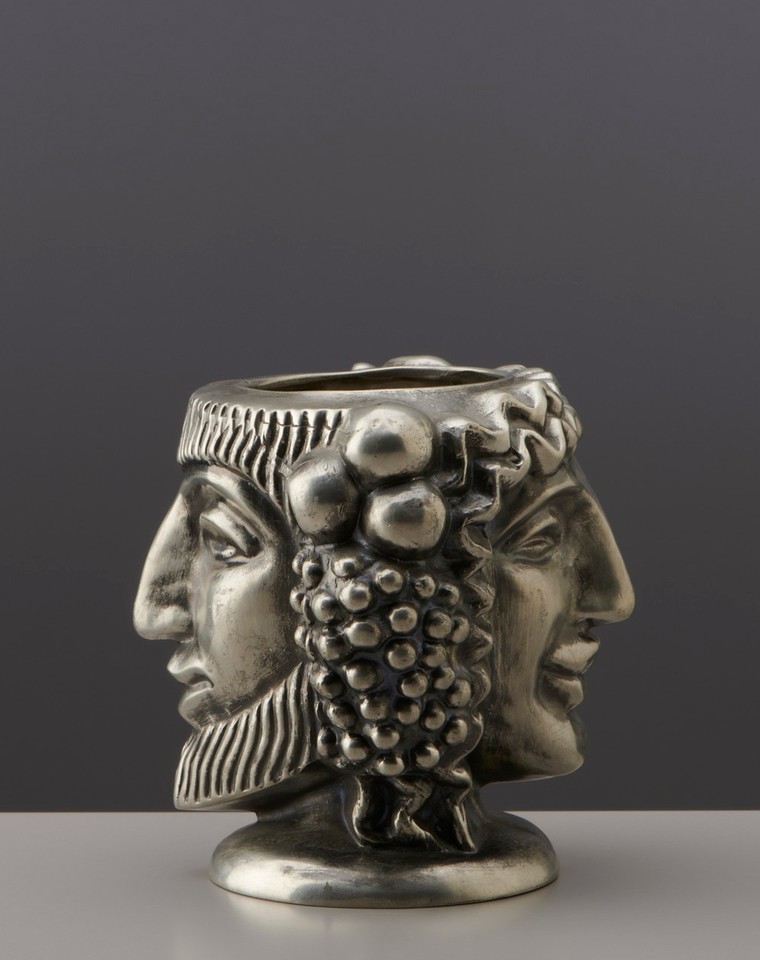
Anna Petrus, 'Janus Head' Vase, 1946, Produced by Svenskt Tenn.
Anna Petrus, 'Janus Head' Vase, 1946, Produced by Svenskt Tenn.
Anna Petrus, Mirror, 1929, Pewter, Produced by Svenskt Tenn.
The "Head of Janus" became a trademark for Petrus. The characters depicted on the legs of the tables, shown at the New York exhibition, show Petrus' early development of the figure. The design for Svenskt Tenn first appeared in 1928 as a pen holder. Eventualy this changed to a small vase illustrating two faces, young and old, in reference to the Roman god of beginning and transition through the sands of time.
Jackson Design is pleased to have added works by Anna Petrus to our collection; with our latest addition one of the tables shown at the New York Exhibition in 1927, and the Stockholm Exhibition in 1930.
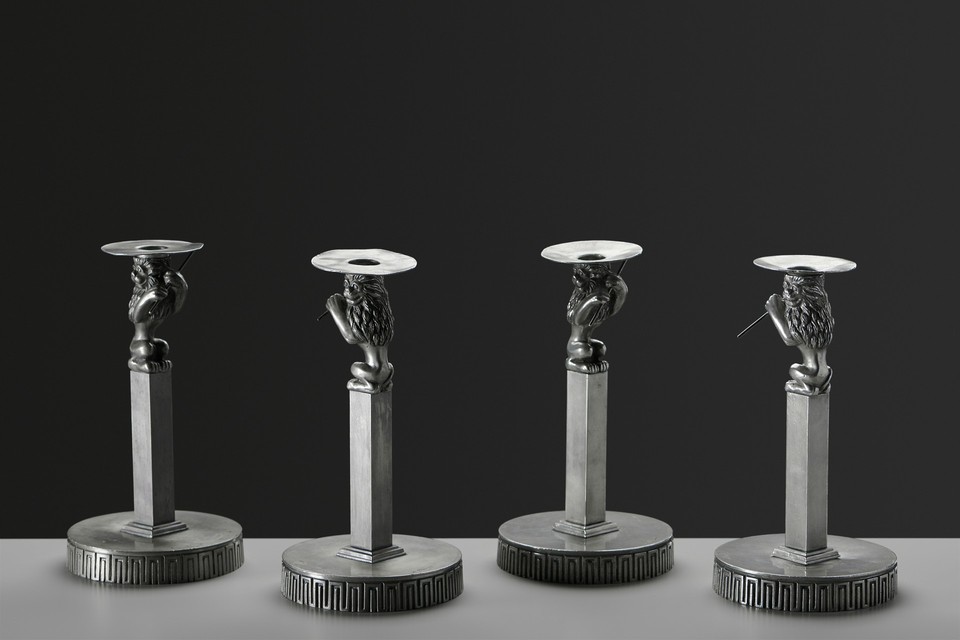
Anna Petrus, Set of Four Candlesticks, 1925, Pewter, brass, Produced by Herman Bergman.
Anna Petrus, Set of Four Candlesticks, 1925, Pewter, brass, Produced by Herman Bergman.
Anna Petrus, Set of Four Candlesticks, 1925, Pewter, brass, Produced by Herman Bergman.
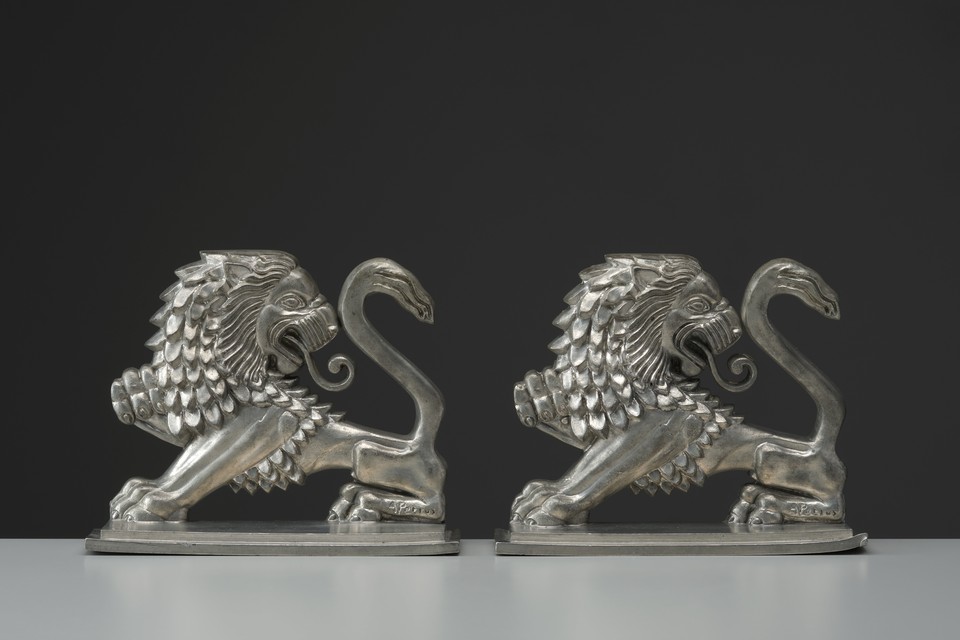
Anna Petrus, Pair of Bookends, 1928, Pewter, Produced by Svenskt Tenn.